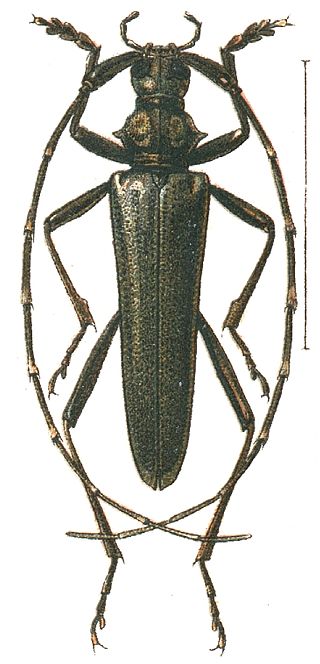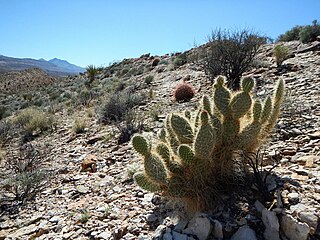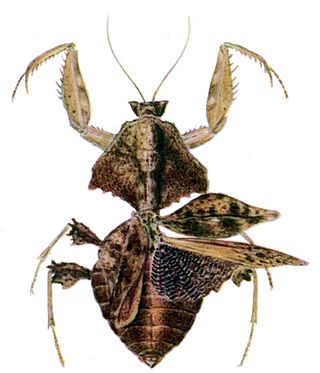
The longhorn beetles (Cerambycidae), also known as long-horned or longicorns, are a large family of beetles, with over 35,000 species described.
Basilar part can refer to:

Lamiinae, commonly called flat-faced longhorns, are a subfamily of the longhorn beetle family (Cerambycidae). The subfamily includes over 750 genera, rivaled in diversity within the family only by the subfamily Cerambycinae.

Tramea basilaris, also known as the keyhole glider, red marsh trotter, or wheeling glider, is a species of dragonfly in the family Libellulidae. It is found throughout most of Africa, Arabia and in Asia. Capable of very long migration and nomadic flight, it reached Europe once, being recorded at the island of Linosa, Sicily (Italy) in 2016. Similarly, this species is able to use the trade winds to reach the Caribbean and South Americas, where it was caught in Suriname, "Guadeloupe" and "martinique".

Tramea is a genus of dragonflies in the family Libellulidae, the skimmers and perchers. Species of Tramea are found in tropical and subtropical regions around the globe. They typically have colored bases to their otherwise translucent hindwings. In particular when they fly, this creates the impression of their carrying bags at the start of their abdomens. They are known commonly as saddlebags or saddlebags gliders.

The Disteniidae are a small family of beetles in the superfamily Chrysomeloidea, traditionally treated as a group within the Cerambycidae.

The Lower Colorado River Valley (LCRV) is the river region of the lower Colorado River of the southwestern United States in North America that rises in the Rocky Mountains and has its outlet at the Colorado River Delta in the northern Gulf of California in northwestern Mexico, between the states of Baja California and Sonora. This north–south stretch of the Colorado River forms the border between the U.S. states of California/Arizona and Nevada/Arizona, and between the Mexican states of Baja California/Sonora.

Opuntia basilaris, the beavertail cactus or beavertail pricklypear, is a cactus species found in the southwest United States. It occurs mostly in the Mojave, Anza-Borrego, and Colorado Deserts, as well as in the Colorado Plateau and northwest Mexico. It is also found throughout the Grand Canyon and Colorado River region as well as into southern Utah and Nevada, and in the western Arizona regions along the Lower Colorado River Valley.
Trypeta basilaris is a species of tephritid or fruit flies in the genus Trypeta of the family Tephritidae.

Matrona is a genus of damselflies in the family Calopterygidae.

Rivellia is a genus of signal flies. There are at least 140 described species in Rivellia.
Trichohippopsis is a genus of beetles in the family Cerambycidae, first described by Stephan von Breuning in 1958.

Opuntia diploursina is a species in the family Cactaceae, that grows near and in Lake Mead National Recreation Area and extending northward across Nevada's Mormon Mesa into Utah.

Opuntia erinacea, the Mojave prickly pear, variously treated as a species, or as a variety of Opuntia polyacantha, in the family Cactaceae, that is a distributed throughout the Mojave and into the southern Great Basin deserts.

Catops basilaris is a species of small carrion beetle in the family Leiodidae. It is found in North America.
Epinysson basilaris is a species of insect in the family Crabronidae. It is found in Central America and North America.

Eratoneura basilaris is a species of leafhopper in the family Cicadellidae.
Chrysolina basilaris is a species of leaf beetle in the family Chrysomelidae. It is found in North America.

Xylobiops basilaris, the red-shouldered bostrichid, is a species of horned powder-post beetle in the family Bostrichidae. It is found in Europe and Northern Asia and North America.

The Majangidae are a revived (2019) family of praying mantids from Madagascar.














